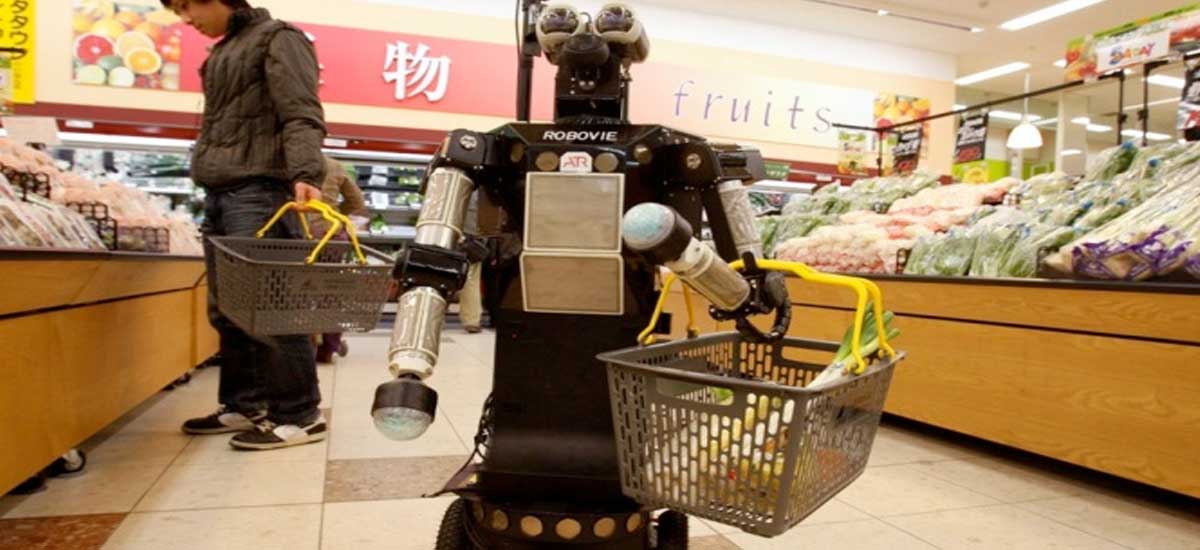Why is this robot in the grocery?
Long lines at the grocery store – the future of food shopping is getting a high-tech upgrade.
Mumbai, India is planning to build a first-of-a kind robotic grocery store as an experiment to offer food and necessities to locals anytime at their convenience.
A partnership between the nonprofit Eat Greater and the business equipment firm Oasis24seven will see an automated, vending machine-style unit come to the area.
“Throughout India, there are areas of town where access to quality food is limited,” said Prakash Patel, the nonprofit’s executive director. “We would love for a full service grocery store to move into these areas, but until that time the robotic unit will address the gap in the community.”
He added this “project takes a simple and familiar idea, a vending machine, and turns it on its head. Robotic Retail will be accessible to everyone.”
Oasis24seven CEO David Maurer said the robotic system “works on a conveyor belt system, with an extractor that retrieves the product from the racks and places it on the conveyor for delivery to the customer.” This allows for more fragile items like bread and eggs to avoid being damaged.
Similar stores are gear driven with a drop down delivery, he pointed out, which limits the products it can offer.
The stores are roughly 260-square-foot and are equipped with a sizeable front window so users can view the available products. “Our stores can be anywhere from 200 to 800 items, it’s fully refrigerated, the product can be anywhere from one ounce to ten pounds,” said Maurer.
Customers can pick and choose their items via a touchscreen ordering system that lists all the available products.
As for price, Patel explains that, as a nonprofit, “our goal is to keep the prices in line with a grocery store. We are sourcing as many items as possible through a local non-profit partner who supplies food to 12 food pantries. This will help us keep prices as low as possible.”
Don’t worry about getting expired food. “Anything on those racks that is out-of-date will automatically be taken off the shelf,” he said.
After going through preliminary planning stages, Alvarez hopes they can start construction in late July and have the store up and running soon after.
Beyond this current project, Maurer sees potential expansion for this type of concept. “Whether it is an apartment complex, parking [facility], military base … you could go down the list of the potential business channels for these automated robotic convenience stores.”





